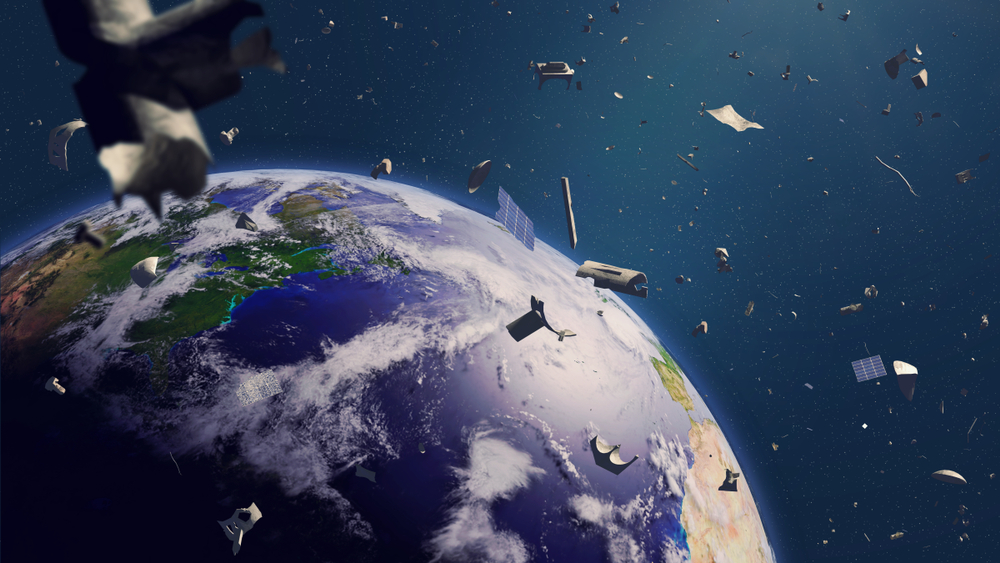What Would Happen to a Decomposing Body in Space?
Posted on Categories Discover Magazine

By some estimates, about 3,000 dead satellites are orbiting Earth, and around 34,000 pieces of space junk have been left behind by humans. Wherever humans go, we always leave a trace.
And it’s an even bigger problem in space because it takes much longer to decompose and does nothing but muck up the place, says Jack Gabit, an associate professor of physics at Creighton University in Omaha, Nebraska.
As humans go back to the moon and aim to travel to Mars, the more people that visit space, the more likely they are to end up dying there. Which brings up the question, what would happen to those bodies in space?
Bacteria in Space
For organic material to break down, you need bacteria, which oftentimes requires oxygen. Although there are some types of bacteria that can break down material anaerobically or without oxygen, often that’s not the case, says Gabit.
“So the question becomes ‘is there enough bacteria present on this item to break something down?” says Gabit.
While only three people have died in space, Georgi T. Dobrovolski, Vladislav N. Volkov, and Viktor I. Patsayev, on the Soyuz 11, their bodies returned to Earth and did not decay in space. If they had, however, there might be enough bacteria already in the body to allow for some sort of decomposition. The decomposition process would be slow, though, seeing as there is no oxygen in space to help move the process along, and dry air would also slow decay.
But when it comes to a piece of trash, it doesn’t naturally contain bacteria, and it would be difficult to begin the process of decomposition.
If an item is floating in the vacuum of space, then the atmosphere would also lack oxygen, which would mean that aerobic decomposition, or that which would require oxygen, couldn’t happen.
“Basically, in the places that decomposition did occur, it would happen much more slowly,” says Gabit.
Read More: What Is Space Junk And Why Is It A Problem?
Decomposition Depends on Placement in Space
For inorganic objects like a piece of metal, for example, the process of decomposition would take much longer in space. While different processes might break stuff down, they all move much more slowly than they would on Earth, says Gabit.
In space, for example, if you had a piece of metal orbiting about, it would depend on where in space the trash was floating. If the trash were in a lower Earth orbit, like around the distance from Earth to the International Space Station, debris would break down due to friction.
Debris orbits around Earth at a pace of about 18,000 mph, hitting air molecules at a rate that would cause it to break down. It might also fall closer to Earth, where it would hit a denser atmosphere at really high speeds and start to burn up more rapidly. But further away from Earth, there’s less friction to break trash down.
“There’s no atoms banging up against the object because you’re essentially in a pure vacuum,” says Gabit.
At this point, you’re left with radiation from the sun, solar wind particles that get blown off the sun, and maybe some tiny meteorites that pelt the debris time and time again, but the process of breaking something down at this point would take thousands of years. And once you hit deep space, the process becomes even slower because you’re further away from the sun, making solar radiation weaker.
The bottom line is that many of those 34,000 objects left behind in space will most likely be there for years to come. And for us humans that travel to space, the decomposing process would be lengthy. It’s best that we keep our space debris to a minimum because if not, in no time, outer space will end up a mess, making it all too easy to collide with one of the objects left behind.
Read More: Scientists Sound Alarm Over Growing Amount of Junk in Space
Article Sources
Our writers at Discovermagazine.com use peer-reviewed studies and high-quality sources for our articles, and our editors review for scientific accuracy and editorial standards. Review the sources used below for this article:
Sara Novak is a science journalist based in South Carolina. In addition to writing for Discover, her work appears in Scientific American, Popular Science, New Scientist, Sierra Magazine, Astronomy Magazine, and many more. She graduated with a bachelor’s degree in Journalism from the Grady School of Journalism at the University of Georgia. She’s also a candidate for a master’s degree in science writing from Johns Hopkins University, (expected graduation 2023).